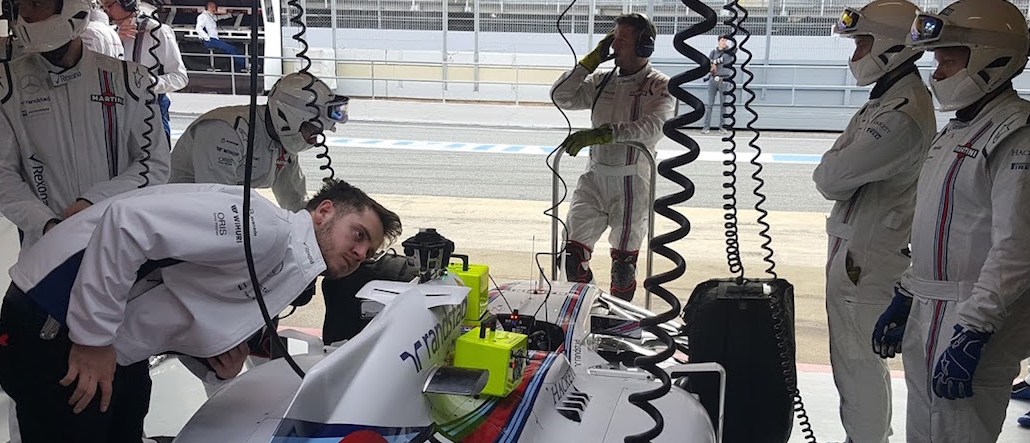
Sky is bullish on virtual reality. While many media companies are exploring VR to create new viewing experiences, few of them are going all-in. But Sky’s message is clear: It wants to be a leader in the space, not a follower.
That’s why the pay-TV operator set up Sky VR Studio in February, a 10-person unit dedicated to creating VR experiences for entertainment, news and sports. It brought in award-winning VR director Richard Nockles to head it up and has since created a load of VR projects for sports fans. The first two were during Formula 1 in March. The 360-degree videos, each a couple of minutes long, ran on Facebook, and took viewers into the pit lane, team garages and out onto the track. Each generated 2.5 million views apiece.
Premier League football and boxing are two other areas Sky Sports has earmarked for VR attention, and it’s working with some of the more digitally advanced clubs like Manchester City. David Beckham made his VR debut to mark Sky Sports’ 25th anniversary in April, which generated 3.2 million views, and another film with him will be released in the coming months, along with a Sky VR app.
It’s gotten up close to British cyclist and Tour de France winner Chris Froome, and it is putting the final touches to a behind-the-scenes VR experience with British boxing heavyweight champion Anthony Joshua in the run-up to his fight with American heavyweight Charles Martin in April. A 360-degree trailer for the fight has been viewed 225,000 times on Facebook.
Nockles believes that although it may take some time for VR to become more mainstream, it’s no passing fad. Buy-in from the top is critical. “We want Sky to be pioneers in the space. It’s a way of future-proofing ourselves,” he told Digiday.
But it’s not been without its challenges. Here’s what the team has learned so far:
Short form works best
For now, short form works better than long form, for Sky anyway. “There’ll be lots of people experimenting with longer form, but the headsets aren’t set up for that yet,” said Nockles. Although he anticipates that to change when the tech becomes more advanced, and the headsets in the market such as Oculus Rift become less heavy and clunky to wear. But for now, keeping videos under five minutes works well. That’s roughly how long the Anthony Joshua video will be. “We want people to feel they know this man, and with this documentary, they will.”
VR directors must think like theater producers
Something to keep in mind when creating a VR scene is that you can’t control what the viewer sees in the same way as a traditional shoot. “As content producers, we need to recalibrate our brains for VR, add more of a theatrical style of production. We’re effectively becoming theater producers,” he said. When shooting a 360-degree video, multiple cameras are strapped together, with the videos later stitched together in post-production to provide that VR view, what experts call “equirectangular” panorama. “The camera sees all. You’re not pointing the audience to particular things but letting them choose where they look,” he added. So dressing the scene and ensuring the shot is interesting in all directions, is a must.
Proximity is everything
The immersive allure of VR means directors are obsessed with the proximity of the cameras, and how close they can get to the action so they can create that feeling of intimacy.
Anything involving super-fast movement is tough to film, so sports like cycling and Formula 1 racing have been challenging. For both, the Sky VR team has tested different ways to create a “floating” camera effect in which the camera can accompany the vehicles closely enough to make the viewer feel part of the action, but without any of the shakiness that makes some people nauseous. It’s had to use specific equipment to hold cameras and cameramen steady while tracking cyclists on the back of motorbikes.
Weather rules are different for VR
Film production has long been accustomed to adapting to unexpected weather conditions. Blissfully clear blue skies and blazing sunshine may be ideal for regular video, but for VR, it throws up different challenges. Nockles dragged his crew and equipment up a mountain — a route that had been signed off for filming Team Sky during the Tour de France to nail a sweeping view of the landscape. Once they got there though, the peak was covered in mist, so the view was obscured. Whereas a director of photography would be able to whip out a bag of lights to make the scene work, he’d have been visible in a VR shot.
Images: Courtesy of Sky.
More in Media

Podcast companies turn to live events to capture growing advertiser spend
The surge in the number of live podcast events in 2025 reflects a broader shift: advertisers are betting bigger on podcasts — not just as an audio channel but as a full-fledged creator economy play.

Media Briefing: ‘Cloudflare is locking the door’: Publishers celebrate victory against AI bot crawlers
After years of miserably watching their content get ransacked for free by millions of unidentified AI bot crawlers, publishers were finally thrown a viable lifeline.

How Vogue could navigate potential industry headwinds as Anna Wintour — who agency execs say made ad dollars flow — brings on new edit lead
Anna Wintour’s successor at Vogue will have to overcome the myriad of challenges facing fashion media and the digital publishing ecosystem.





